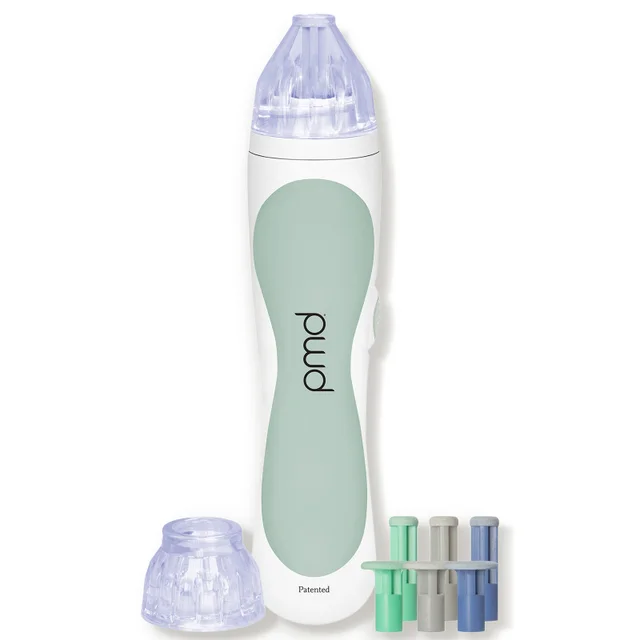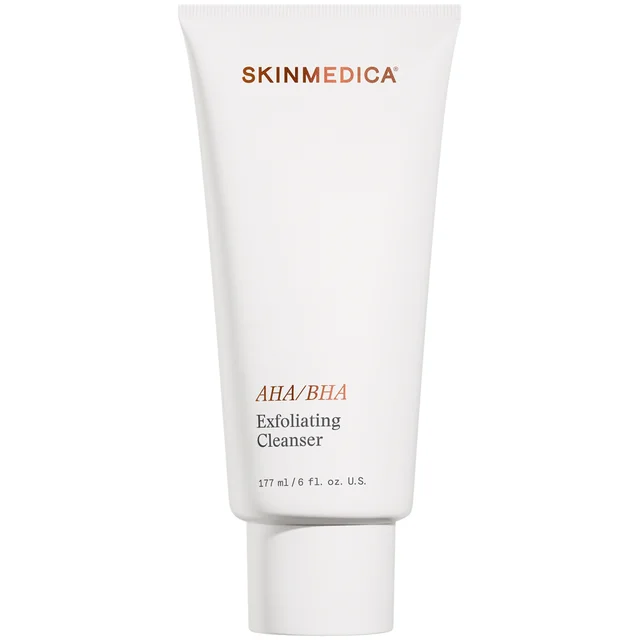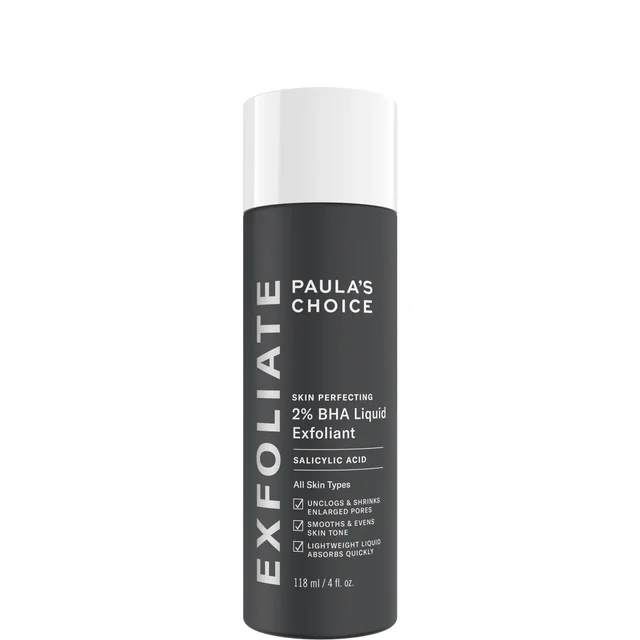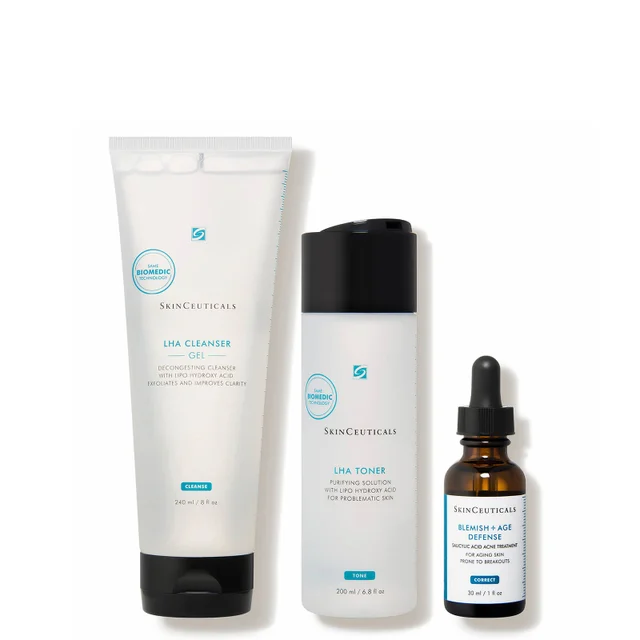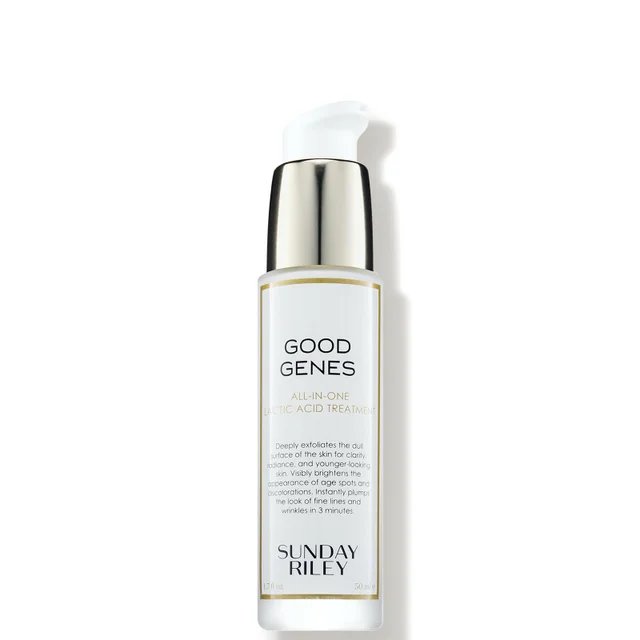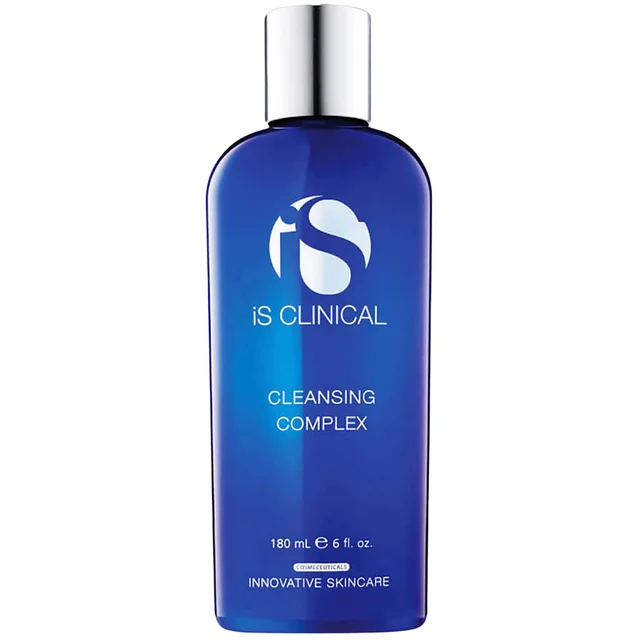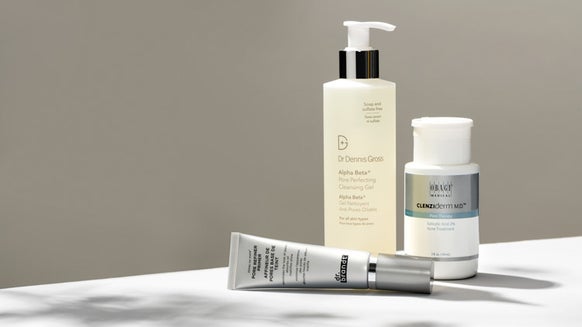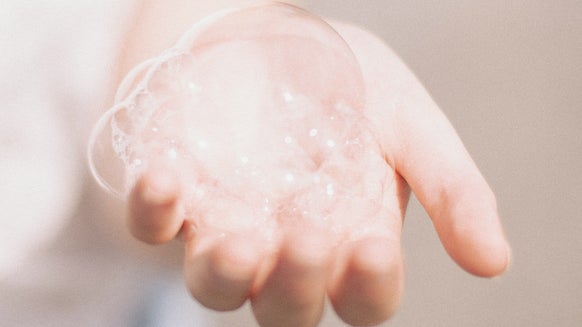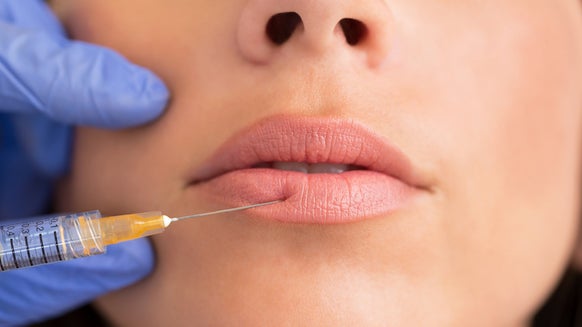Physical vs. Chemical Exfoliation for Large Pores
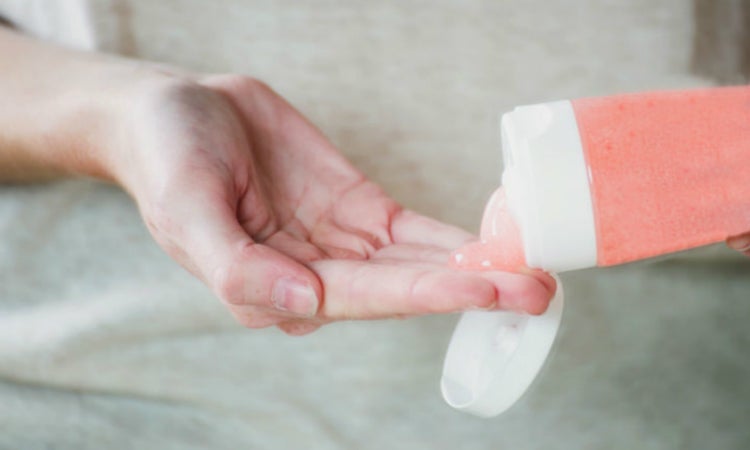
To scrub or not to scrub—that is the question. From funky face sponges to state-of-the-art cleansing brushes, there is no shortage of exfoliating solutions. Exfoliating is an essential step in everyone's routine. Not only does it prevent breakouts by removing dead cells that build up on the surface of the skin, but it also helps to maintain a smooth complexion. While it is almost impossible to change the size of the pores, you can minimize their appearance by getting rid of the built-up dead skin cells on the skin's surface. While there are varying benefits when it comes to using physical or chemical sloughing options, it's important to consider the right one for your skin type.
Regular exfoliation is a must in the quest for clear, healthy, glowing skin, but with so many different options, how’s a girl (or guy) to know what to reach for? Exfoliating products run the gamut from chemical exfoliators to physical exfoliators and even manual variations. While each type of exfoliator works differently, they all work towards removing pore-clogging dead skin cells for a brighter, smoother complexion, fewer breakouts, and smaller pores. The advantages of regular exfoliation are endless, but finding the correct type of exfoliator that matches your skin is key.
What Is Physical Exfoliation?
Physical exfoliation involves using various tools or abrasive substances to physically slough away the outermost layer of the skin. You can buy motorized dermabrasion sponges or brushes, or rough sponges and scrubs that do the same job but without the motor. Oily skin types benefit the most from "mechanical" exfoliators, as they can withstand more abrasive cleansing.
Physical exfoliators are skincare products, like scrubs and skincare tools, such as special sponges and brushes, that rely on an abrasive material to remove dead skin cells from the skin’s surface. The most common physical exfoliators in skincare products are sugar, salt, ground-up nuts and shells, bamboo particles, microbeads, and other synthetic exfoliating agents.
To put a physical exfoliator to work and reap its benefits, the exfoliating agent is gently massaged onto the skin. Scrubbing the abrader against the skin causes dead skin cells to be lifted off the skin and whisked away, revealing fresh new skin cells and smoother, brighter skin. Physical exfoliators are often used to improve rough and dull-looking skin, promote skin cell turnover, and enhance the absorption of other skincare products. However, some physical exfoliators can be damaging or irritating to the skin, so you should always use them cautiously and never aggressively.
Best For: Oily and combination skin types and thicker skin, which can often handle the exfoliator best.
The Benefits of Physical Exfoliation
Whether you reach for a physical exfoliator that’s a scrub, mask, cleanser, or brush, the goal is to release sticky dead cells and promote smoother, brighter-looking skin with smaller pores. Regularly exfoliating the skin, about one to three times per week, depending on your skin type, helps produce new skin cells, leading to more evenly toned skin and improved skin texture.
Exfoliating brushes and scrubs are widely available. They're convenient to use at home, and they provide an easy and relatively effective way to get rid of dead skin cells and impurities and temporarily minimize the appearance of large pores. They are especially effective for getting rid of blackheads. However, they're not always the most gentle way to exfoliate. Excessive abrasion can result in irritated skin. For those with sensitive skin, opt for gentle, fine-grained cleansers. When choosing a granular scrub, try to avoid any products with nutshells or fruit pits that can irritate skin.
Fewer Blackheads: One of the main benefits of using a physical exfoliator regularly is that they can dislodge sebum, bacteria, and dead skin cells that cause blackheads to form. Your Products Absorb and Work Better: Physical exfoliants earn top praise because they allow for the subsequent products in your skincare routine to be absorbed into the skin better so they work more effectively. Brighter Skin: When dead skin cells are removed, there’s also a renewed sense of radiance to the skin since exfoliating the skin stimulates skin cell turnover. Smaller-looking Pores: Oily and acne-prone skin types appreciate the benefits of physical exercise, too, which helps dislodge trapped dirt oil, dead skin, and other impurities from within the pores. Releasing these substances can make enlarged pores appear smaller and can also limit the occurrence of acne breakouts. Increased Cell Renewal: Removing the top layer of dead skin cells allows the skin to stay on track during its natural shedding cycle. Removing dead skin cells allows fresh, new skin cells to reach the skin’s surface.
What Is Chemical Exfoliation?
Most chemical exfoliants can be classified as two types: AHA, or alpha-hydroxy acids, and BHA, beta-hydroxy acids. The two most popular AHAs are glycolic acid and lactic acid while BHA usually refers specifically to salicylic acid. These acids help slough away dead skin cells, while potentially normalizing skin cell turnover and stimulating the growth of normal, healthy skin. Enzymatic peels, such as bromelain and papain from pineapple, help digest dead skin cells.
Unlike physical exfoliators that physically remove dead skin cells, chemical exfoliants loosen the bond between the skin and dead skin cells. All chemical exfoliants (chemical peels are a type of chemical exfoliant) fall into either the alpha hydroxy acid (AHAs) or beta hydroxy acids (BHAs) category. AHAs, consisting of lactic and glycolic acids, break down the bonds between dead skin cells on the skin's surface, promoting their shedding. BHAs, such as salicylic acid, lift away dead skin cells to promote normal, healthy skin. There are also enzymatic exfoliators, which eat away at dead skin cells.
Since chemical exfoliators are more versatile, they can address a plethora of skin conditions and concerns, making them a staple addition to your skincare routine if you want clear, smooth, more glowy skin. Relying on exfoliating ingredients such as glycolic, lactic, mandelic, salicylic, and polyhydroxy acids, as well as papaya and pineapple enzymes, chemical exfoliants are effective in targeting and treating acne, uneven skin tone, rough, dull texture, clogged pores, and pimples, and, interestingly enough, even dry skin.
The Benefits of Chemical Exfoliation
Since chemical exfoliants do not involve rubbing the skin, they are generally safer than many physical exfoliants. Hydroxy acids, such as salicylic and glycolic acids, have the ability to penetrate the skin for deeper exfoliation. Enzymatic exfoliators are also effective, but they are not as strong as hydroxy acids, so they're better for sensitive skin. Salicylic acid is especially effective for oily, acne-prone skin, while combination skin will benefit from an AHA that controls oil-production.
Deep Exfoliation: Chemical exfoliating acids like glycolic and salicylic acid can work their way deeper into the dermis for a more vigorous exfoliation Helps with Oil Production, Breakouts, and Clogged Pores: Salicylic acid benefits oily and acne-prone skin by breaking down oil on the skin's surface while loosening dead skin cells. Brighter Skin: With fewer dead skin cells on the skin's surface, which can contribute to a lackluster complexion, the skin emerges brighter and more even. AHAs help fade dark spots and hyperpigmentation. Improved Skin Texture: Using a chemical exfoliant in your skincare routine can help skin feel smoother and soften the look of fine lines and wrinkles. Boosted Collage: Some chemical exfoliations improve collagen production for smoother, firmer, and more youthful-looking skin.
This article has been reviewed by board-certified dermatologist Dr. Emmy Graber.

From the latest hair and makeup trends to the best solutions for your skin issues, we've got all your beauty concerns covered!
